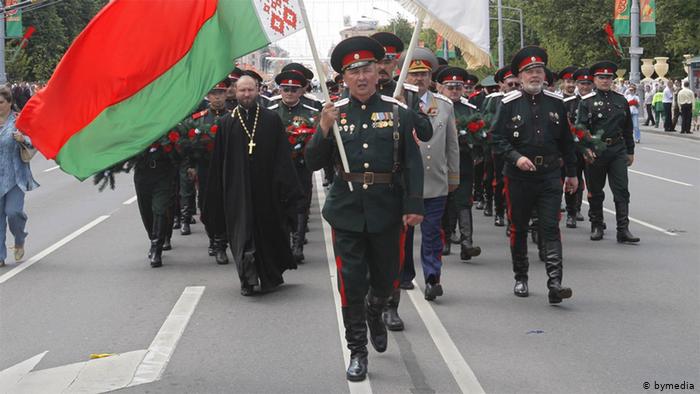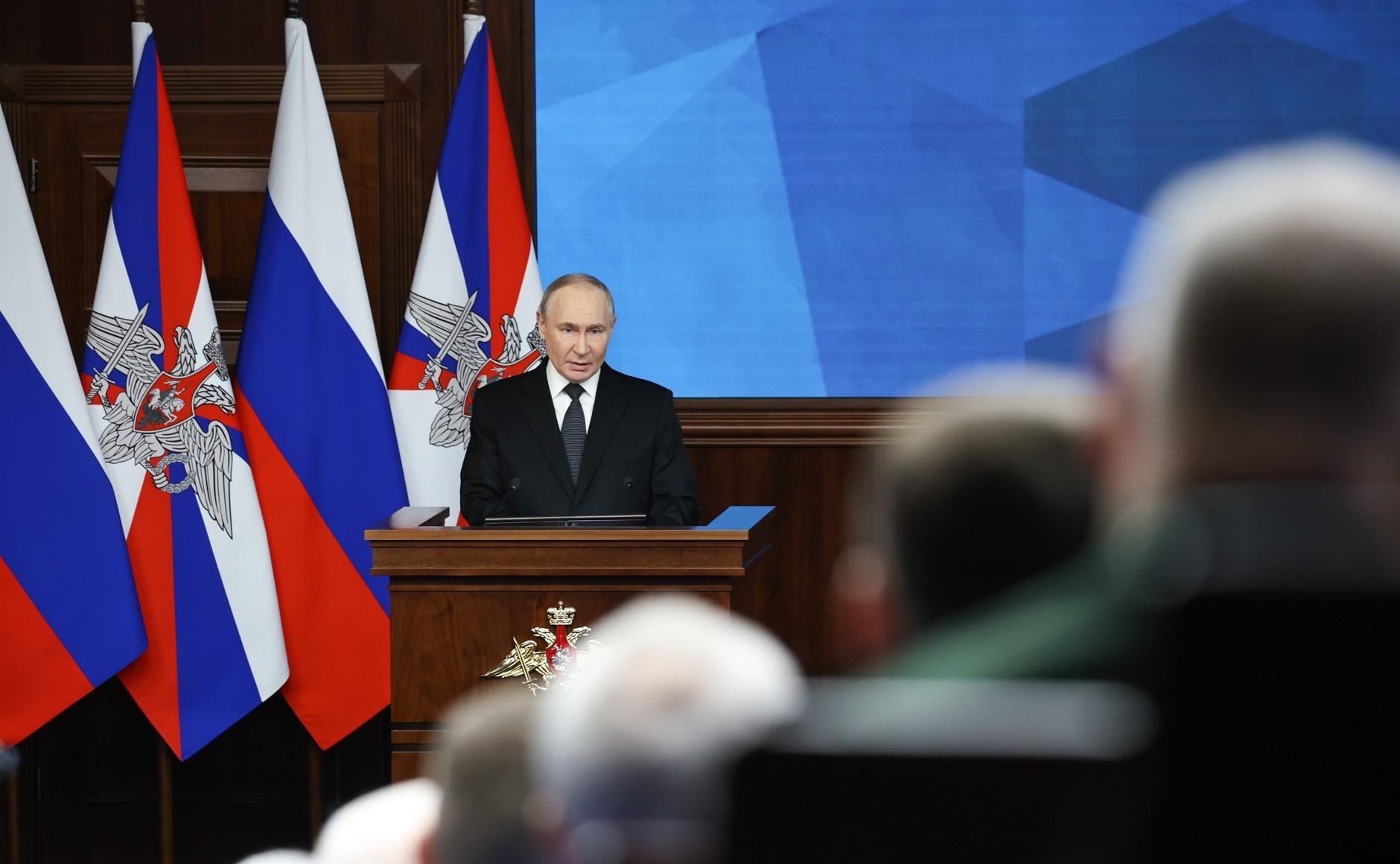
Belarusian Cossacks—An Option for Putin?
Belarusian Cossacks—An Option for Putin?
Due to certain superficial similarities between the ongoing post-election demonstrations in Belarus and the EuroMaidan protests in Kyiv in 2013–2014, some commentators have speculated about the possibility of “another Crimea” in Minsk. President Vladimir Putin’s annexation of Ukrainian territory six and a half years ago temporarily boosted his popularity in Russia and arguably delayed the integration of Ukraine into the Euro-Atlantic security community. And now, the argument goes, facing extended anti-Kremlin protests in the Russian Far East and general popular dissatisfaction with the direction of the country (see EDM, August 3, September 14), Putin might want to repeat such a move in Belarus, which would ostensibly have the added benefit of preventing Minsk from moving into the Western orbit. Numerous important differences exist between Russia’s two East Slavic neighbors, which make any sort of Belarusian Crimea scenario highly unlikely (see EDM, September 10). And yet, a little-known factor common to Ukraine and Belarus—namely the existence of Cossack groups in both countries—suggests that the hypothetical annexation threat should not be entirely dismissed out of hand.
Is worth remembering that the Cossacks played an important role in the annexation of Crimea and remain a force for destabilizing Ukraine even today (see EDM, March 18, April 16, June 30). In Crimea, the presence of supposedly “native” Cossack forces was sufficient grounds for Moscow to sneak in Cossacks from neighboring Krasnodar to provide civil and military assistance to Russian forces. Kuban Cossack Ataman (head) Nikolai Doluda later described how his group had operated “on the front lines,” and he noted Putin’s praise of Cossack irregulars (Kuban24.tv, March 18, 2019).
Historically, Cossacks originated in the southern lands of the Russian Empire, but imperial expansion, modernization, and industrialization dispersed them throughout the entire territory of the latter Soviet Union and beyond its borders. As a result, Cossack organizations now exist in the Russian Far East, the Middle Volga region, the North Caucasus, Ukraine, Serbia and even diaspora communities in the United States. Notably, there are also such organizations in culturally and geographically proximate Belarus, so it is worth asking whether they might play a similar role in that country as they did in parts of Ukraine leading up to the spring of 2014.
At first blush, the distinction in Russia between Kazaki and Kazachestvo looks to be replicated in Belarus. Kazaki might loosely be identified as ethnic or “authentic” movements, whereas Kazachestvo is a kind of stylized version of Cossackry. In Russia, movements of Kazaks have agitated on occasion for greater autonomy from Moscow (see EDM, August 9, 2018), whereas Kazachestvo units have been drafted into the service of the Kremlin. In Ukraine, the image of Kazaki is a source of motivation for those on the front lines in Donbas and a great source of national pride. In Belarus, Kazaki, almost by definition, lack an organized structure, and so it is difficult to find information on them. Still, at least one Belarusian Cossack website, Kazaki.by, presents itself as “a social information portal for activities of Cossacks in the Republic of Belarus and Belarusian Kazachestvo, independently of their belonging to a genuine host and different social organizations.” The portal goes on to carry a statement from leading local Cossacks declaring, “Today, the whole world is shocked, united in horror at the cruelty and hatred of the actions of the Belarusian tyrant and in sympathy and compassion for ordinary Belarusian citizens against whom this ‘Batka’ [‘Father’—a nickname heretofore frequently applied to President Alyaksandr Lukashenka] employs such monstrous violence, which, on its massive use alone, deprives Lukashenka of any moral right to lead this country” (Kazaki.by, accessed September 22, 2020). This Kazak entity is thus on the side of the protesters and joins the chorus of moral outrage.
On the other hand, Kazachestvo organizations—which feature links to both the Belarusian authorities and, indirectly, Russia—for now appear to be staying mostly quiet regarding the political drama in Minsk. The organization Belorusskoe Kazachestvo maintains close connections with the exarchate (subordinated to Moscow) Belarusian Orthodox Church. Indeed, as in Russia, there is an entire department within the Belarusian Church devoted to “interconnections with Cossacks.” The organization has also called for allowing Cossacks to serve in the army under their own uniforms and stressed the importance of defending the Belarusian state and its territory (Belkazak.by, accessed September 22). Following the outbreak of war in eastern Ukraine in 2014, the Belorusskoe Kazachestvo started hosting “big circle [krug]” meetings with Cossacks from across Belarus. It is also worth pointing out that, in 2015, Supreme Ataman Nikolai Yerkovich dropped his support for the presidential candidacy of Ataman Mikalau Ulakhovich and urged Belorusskoe Kazachestvo members to vote for incumbent President Lukashenka instead (Naviny.by, October 5 2015). It seems reasonable to infer that someone or some group had put pressure on the supreme ataman not to endorse an opposition candidate. Ulakhovich has been the leader of the pro-regime Belarusian Patriotic Party since 1999 and, following his failed 2015 presidential bid, became a parliamentary deputy and a member of the committee for ecology in 2016 (House.gov.by, accessed September 23, 2020). As a prominent Cossack in Belarus, Ulakhovich may well be someone to watch as political events in the country continue to develop.
Investigative reporting by the German news outlet Deutsche Welle in the aftermath of the Crimean annexation found a similar division between individual imitators of Cossack historical tradition and more explicit Kazachestvo formations agitating for the creation of military units that could receive government support. At that time, the investigation suggested that Belarusian Cossacks could become a “fifth column” in the context of instability in Belarus. And although Belarus’s Cossacks do not openly show their affiliation with Russian Cossack organizations, Mikalau Ulakhovich has notably gone on record to say that “the Russian World does not need to be brought to us, it is already in the souls of believing Belarusians” (Deutsche Welle—Russian service, February 16, 2015). Belief in the triune nature of the Russian, Ukrainian and Belarusian people—a claim with dubious historical roots but one frequently repeated by the Kremlin (see EDM, August 4, 2015 and November 8, 2017)—is a central tenet promoted by Belarusian Kazachestvo organizations. It is unclear to what degree Cossack movements in Belarus are willing and able to impact the turbulent political situation inside the country. But as the Ukrainian case shows, these groups certainly have the potential to serve as a possible cover for incoming Russian irregulars. Whether Putin tries to activate this seemingly cultivated base of support represented by Belarussian Kazachestvo deserves to be watched closely.


